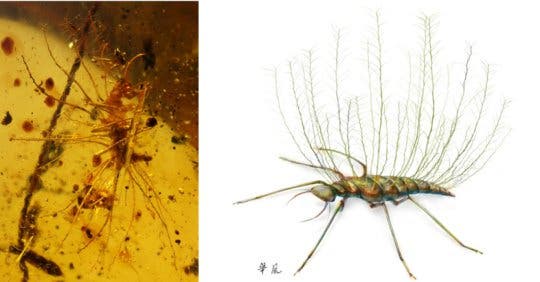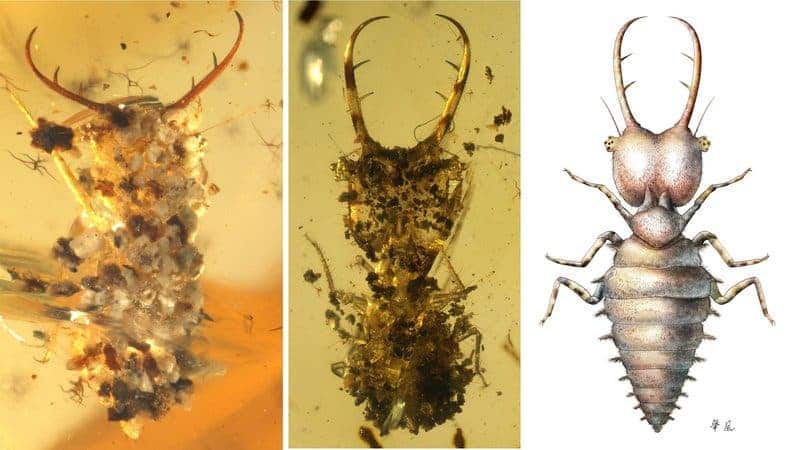
Insects are among the best disguise artists in the world. A few are so well-disguised they’re incognito almost anywhere, like the stick insects who use their twig-like bodies to become virtually invisible just by holding still. The findings of a group of Chinese researchers led by Bo Wang suggests this striking behaviour evolved at least 100 million years ago, as revealed by dozens of insects trapped in fossilized amber with their camouflage still intact.
Wang and colleagues at Chinese Academy of Sciences in Nanjing painstakingly went through 300,000 amber fossils from around the world, 39 of which were presented in a new paper published in the journal Science Advances. The authors write that these insects employed complex camouflage techniques, not at all different from the kind we see today. This includes cloaking themselves with plants, grains of sand, soil, leaves and even the carcasses of their prey.
The discovery of such an extensive use of camouflage among so many species came as a surprise to the researchers involved, given Cretaceous ecosystems and plants are systematically different than present day ones.
“These are very rare fossils, which give us unique insights into life more than 100 million years ago”, says Dr. Torsten Wappler of the Steinmann-Institute of the University of Bonn, who joined Dr. Wang and Professor Rust to classify these oldest examples of camouflage.
One of the most interesting behaviours was that of some larvae who used grains of sand as a sort of armour to protect themselves against spider bites. To cover themselves in sand better, the larvae adapted special legs which can turn 180 degrees, allowing them to transport the sand using their backs.

Other insects employ more classical forms of camouflage like using plant residue to blend with the surroundings and become impervious to predators. Though it may sound simple, playing hide and seek is, in fact, a very complex behavior. It requires, first of all, recognizing which materials from nature are suitable, then carry or process these materials.
Perhaps the most striking of all the amber fossils, all of whom were larvae by the way, were the lacewings. These insects attacked Cretacious scorpions then used their mouthparts to effectively suck them dry until nothing but an exoskeleton remained. The lacewing then puts its scorpion shell on its back, it old outlines now no longer visible. This camouflage protects the larvae against predators but also makes attacking new prey easier.
“With this ‘disguise’, the lacewing larva pretends to be someone completely different”, says Prof. Dr. Jes Rust of the Steinmann-Institute of the University of Bonn. “Using the pieces of its prey, it even takes on the smell of the pseudoscorpion”.
The researchers say the insects must have evolved all of these camouflage abilities independently since the analyzed species weren’t related. It would be interesting, however, to find out if today’s insects who use camouflage also independently evolved this ability or what we see today was inherited from species at least 100 million years old.
“Apparently, camouflage offers many advantages for the user, for which reason it was ‘invented’ multiple times during evolution,” Rust added.






